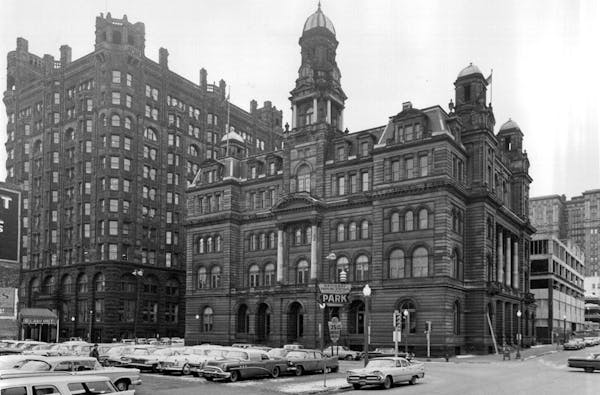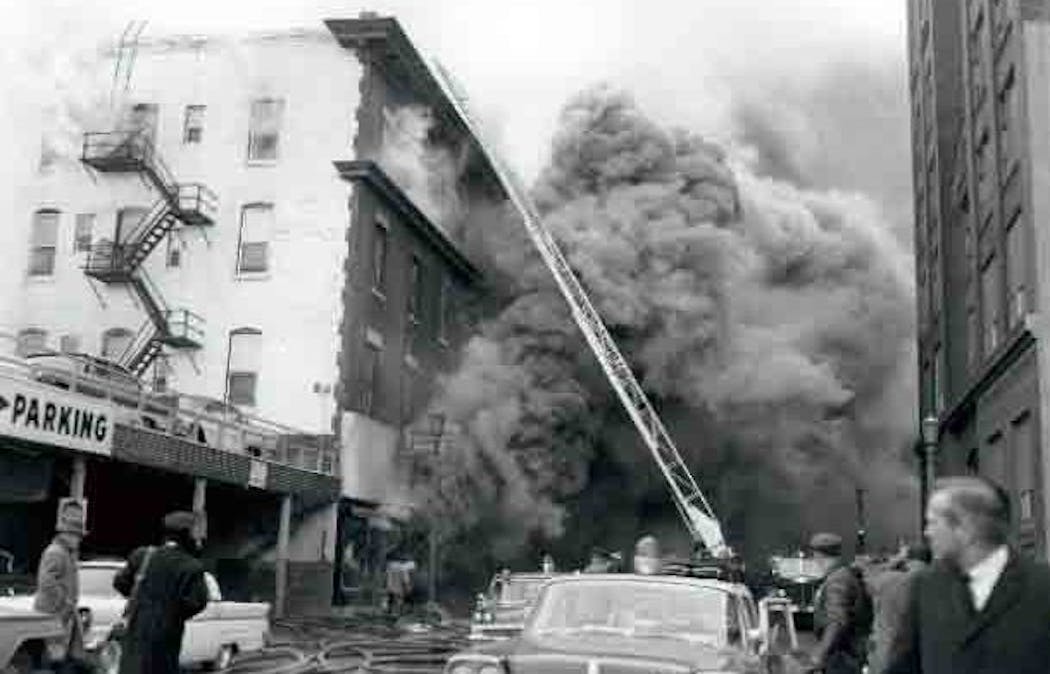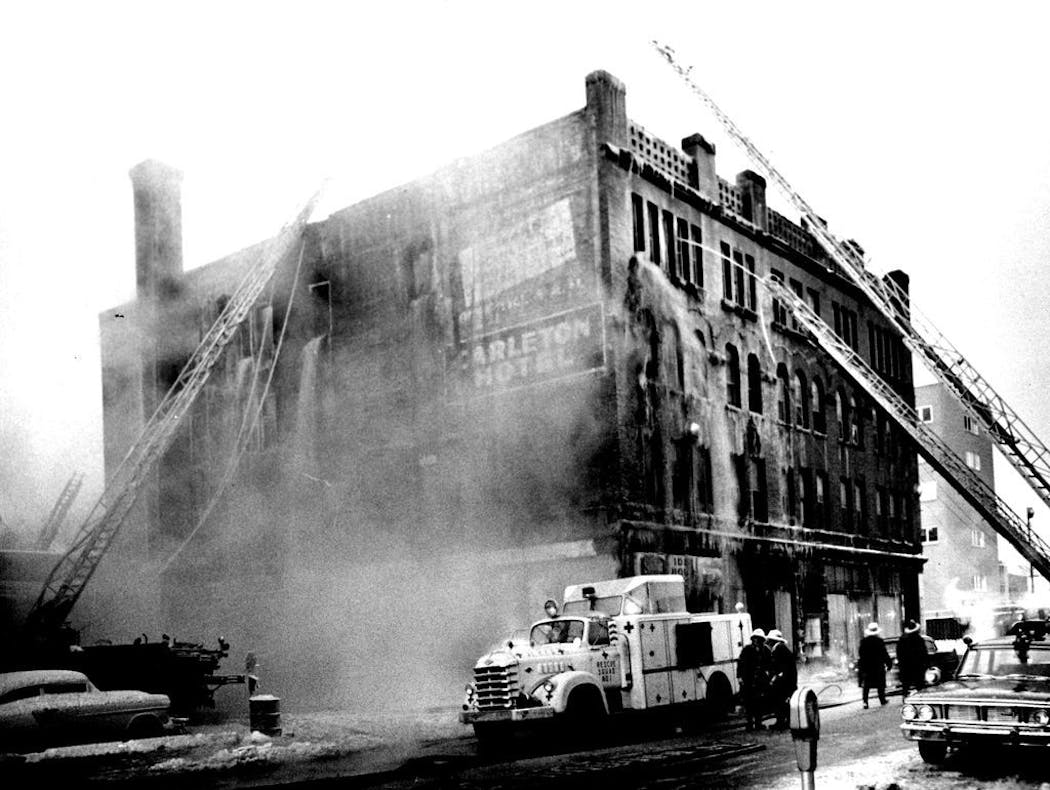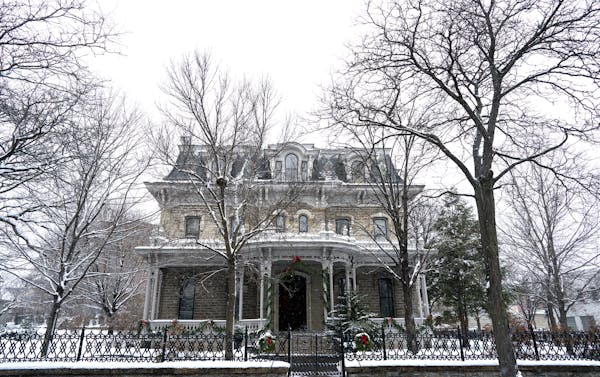The 1982 Thanksgiving Day fire that destroyed the vacant Donaldsons department store complex and neighboring Northwestern National Bank building was among the worst in Minneapolis history.
Although no fire of comparable size ever occurred in downtown St. Paul, the city did experience a stunning series of blazes in the 1950s and 1960s that destroyed four old residential buildings, heavily damaged another and claimed a total of 17 lives.
The fires struck at a time when downtown St. Paul — unlike its urban-renewal-loving counterpart across the river — remained a museum of Victorian and early-20th-century architecture.
Dozens of old brick and stone buildings, most no higher than six stories, lined St. Paul's narrow streets, not just in the Lowertown warehouse district but extending throughout much of the commercial core between Jackson and St. Peter streets.
Aging hotel and apartment buildings that catered primarily to low-income tenants were especially abundant, and many had one thing in common: They were potential fire traps waiting for a spark.
And sparks there were.
Between 1950 and 1966, at least five multi-alarm fires roared through downtown St. Paul's stock of historic residential buildings, leaving behind a legacy of death and ruin. It's possible these fires, which highlighted the dangers of crowded old structures lacking up-to-date safety features, helped spur urban renewal efforts that ultimately transformed the heart of downtown St. Paul.
The first big fire of the postwar era struck on Aug. 13, 1950, at the Jewell Hotel on 5th Street between Wabasha and Cedar streets.
It was a six-alarm blaze that drew virtually every piece of fire equipment in St. Paul as well as units from Minneapolis. Huge crowds gathered to watch the fire, which quickly consumed the five-story brick residential hotel, built in 1885. All 70 or so of the Jewell's occupants managed to escape without serious injury, although four had to be plucked from windows via aerial ladders.
One notable casualty was the presciently named Flame Bar, which occupied the ground floor of the hotel and was declared a total loss.
Next to burn, in December 1955, was what was then known as the Willard Apartments at 10th and St. Peter streets. Built in 1889 as the Palazzo Hotel, the building had been elegant in its day, but was well past its prime by the mid-1950s.
The fire started on the top floor, probably ignited by a worker's carelessly discarded cigarette. Residents got out safely, but a brave 53-year-old hotel maid named Augusta Heasley died as she tried to reach the sixth floor to sound the alarm.
Unlike the Jewell, the Willard (now known as the Colonnade Apartments) survived the fire, but only after its two upper floors were amputated, a surgery that did not improve its appearance.
Another dramatic fire occurred July 28, 1959, at the Minor Hotel at the southeast corner of 4th and Robert streets (where the U. S. Courthouse now stands). Originally known as the Frontier Building, the four-story residential hotel dated to 1880.
The fire broke out in early-morning darkness, spewing thick clouds of smoke that rapidly filled the hotel. Its 27 residents, mostly older women, had little time to flee. Some made it down fire escapes or were rescued by firefighters from high windows.
But the smoke took its toll. One woman was found dead in her fourth-floor apartment and three others later died from the effects of smoke inhalation. The hotel itself sustained heavy damage and was soon demolished.
Another St. Paul landmark, the Frederic Hotel, burned down just 18 months later, on Jan. 20, 1961, the day John F. Kennedy was inaugurated as president.
The 102-room, four-story hotel, built in 1903 at the northeast corner of 5th and Cedar streets, had originally been owned by Fred and Electa Snyder. He ran the hotel while she pursued a career as an opera singer and part-time impresario. The couple also owned a summer home (long gone) at Snelling and Larpenteur avenues designed by none other than Emmanuel Masqueray, architect of St. Paul Cathedral.
Fred, it turned out, had a wandering eye and found the hotel a convenient place for his indiscretions. Electa discovered his activities and the couple divorced in 1923 amid the sensational airing of much unpleasant domestic laundry.
New owners eventually took over the hotel, which was already fading by the time of the 1961 fire. The eight-alarm blaze started in the basement and rapidly engulfed the entire structure. Once again, St. Paul firefighters climbed their ladders to rescue trapped occupants. One guest was unaccounted for, however, and his body wasn't found until a week later as the hotel was being demolished.
Deadly fires, lasting change
The last of the downtown St. Paul fires, at the nondescript Carleton Hotel, proved to be the deadliest. At the southwest corner of St. Peter and Exchange streets, the four-story Carleton had been built around 1900 and was described in newspaper accounts as a "workingman's hotel."
The fire ignited around 4 a.m. on Jan. 6, 1966, when a hotel resident, who would be among the dead, apparently fell asleep with a lighted cigarette in a second-floor bathroom.
Smoke and flames raced through the building, catching sleeping residents unawares, and many had to run for their lives.
One firefighter told the Minneapolis Tribune that when the first fire crews arrived, they found "three women screaming down the hall … their clothes flaming like torches. We doused them with water."
The building was a smoldering shell in less than two hours. Nine bodies were found in the rubble and 17 other residents (two of whom later died from their injuries) were taken to hospitals.
It was among the most lethal fires in St. Paul history and fueled calls for better inspections of the city's many old hotels and apartments.
St. Paul's great fire outbreak is unlikely to repeat itself, not only because of modern safety systems but also because very few old residential buildings of the kind that burned between 1950 and 1966 remain in the downtown core.
Urban renewal, freeway construction and other developments reshaped much of downtown St. Paul after the late 1960s, and big building fires, thankfully, are much less common.
Larry Millett is an architecture critic and author of 14 nonfiction books and eight mystery novels. He can be reached at larrymillett.com.





